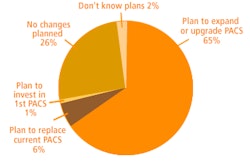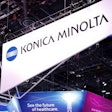A Boston-based start-up is tackling one of the thorniest problems in PACS -- importing external patient CDs into a local PACS. In the process, LifeImage hopes to build a cloud-based image-sharing network with far-reaching benefits for healthcare.
LifeImage of Newton, MA, was founded in January 2009 by Hamid Tabatabaie, who was founder and chief executive officer of Boston-based PACS firm Amicas until he left the company in 2005. Amicas was one of the earliest PACS companies and thus helped convert the radiology world to digital image management.
Although PACS has solved a host of headaches for radiology (remember lost films?), it has also created problems of its own -- the most annoying of which is the external CD. The disks have become ubiquitous as radiology departments turn to them as a cheap way to transfer images to institutions that aren't on their PACS network.
The problem comes if you're on the receiving end of one of these CDs. Incompatibilities between PACS image file formats -- despite the DICOM standard -- leave many institutions unable to read external CDs, which can waste a department's time and resources and, worse yet, force them to repeat imaging exams.
After experiencing this phenomenon firsthand when a family member became ill, Tabatabaie decided to focus his energies on solving the problem. "We've done a good job in PACS with automating radiology departments in a facility, but we've stopped short of connecting all these silos to each other in a way that helps patients and physicians," he told AuntMinnie.com. "We gave birth to the PACS that causes CDs to be printed, so we need to fix this problem."
The birth of lila
A simple solution to the problem would be to require every site that needs to transfer images to use the same computer network and the same file format. But that's not a practical solution in healthcare, especially given the Balkanized U.S. system with thousands of independent providers.
Some healthcare facilities have addressed the issue by setting up virtual private networks (VPNs) between sites, or by developing custom interfaces between networks. But these can be time-consuming to set up and also involve identification and authentication issues.
Instead, LifeImage envisioned a network of gateways that would enable the independent silos within healthcare -- PACS sites -- to communicate with each other. Initially, the network would solve the external CD problem, but as it matures it can become the platform for a whole range of image-sharing applications.
At the core of LifeImage's network is the LifeImage Local Appliance, or lila. Lila is an application that is installed on a hospital's network servers, without the need for separate installation on the desktop client computers that serve as PACS workstations. When an external CD is inserted into any desktop computer on the network, the computer connects to the server via a Web browser and receives the instructions it needs for opening the external CD and accessing its images.
Once recognized, the external studies can then be pushed into the facility's own PACS network, with lila reconciling the original medical record number from the referring institution with that of the new facility, and noting the study in the RIS. One facility that has installed lila, Moffitt Cancer Center in Tampa, FL, said the application has eliminated the headaches associated with external CDs since it was installed earlier this year.
"As long as I've been here, we've had issues with huge numbers of patients who, to save money for the center where they were imaged, bring us just a DVD instead of the old-fashioned images I could put up on a lightbox," said Vernon Sondak, MD, chair of the department of cutaneous oncology. "I push the button and I know in a short period of time [the image] will be uploaded into our system and everyone in the institution can view it."
Sondak estimates that lila is able to open 80% of the external CDs the institution receives.
The next step
As LifeImage's installed base for lila grows, the company is looking at growth opportunities outside just processing external CDs. Tabatabaie noted that each facility that installs lila becomes a node on the company's network, which creates the potential for more sophisticated image sharing.
In February, the company launched Trauma Image Management and Exchange (TIME), a Web-based service that helps trauma units collect images and share them with other healthcare providers, such as surgeons. Tabatabaie describes it as a sort of PO Box where users can place images to be accessed by other lila sites with the appropriate credentials. TIME could ultimately replace CDs for referring images, he believes.
At the upcoming RSNA meeting, LifeImage will demonstrate a virtual teleradiology service that Tabatabaie describes as an open market for teleradiology. Armed with just a cell phone and a Web browser, users will be able to review images and dictate reports into a cell phone, where voice recognition software will produce reports that are sent back to the radiologists for correction and then forwarded on to the referring physician. Tabatabaie is targeting a turnaround time of seven minutes for the entire process.
One area where Tabatabaie is not steering the company is toward archiving services. As it uses a cloud-based computing architecture, LifeImage could store a site's images for an indefinite length of time, such as for disaster recovery purposes, but at present the company only holds images for one year.
Either way, LifeImage plans to leverage the promise of cloud computing to bring benefits to radiology similar to those that the technology has conferred on other industries, primarily by freeing users from the hassles of maintaining their own IT networks and applications.
"Radiologists in general would much rather see to the business of reading images than becoming their own IT shop," Tabatabaie said. "Cloud computing has that promise for radiology. Just plug into the wall, we'll do the rest."
By Brian Casey
AuntMinnie.com staff writer
August 25, 2010
Related Reading
LifeImage builds client stable, July 27, 2010
LifeImage hires former Amicas execs, July 20, 2010
LifeImage adds to client list, July 14, 2010
LifeImage signs Yale-New Haven Hospital, April 13, 2010
LifeImage launches trauma image exchange, March 1, 2010
Copyright © 2010 AuntMinnie.com



















